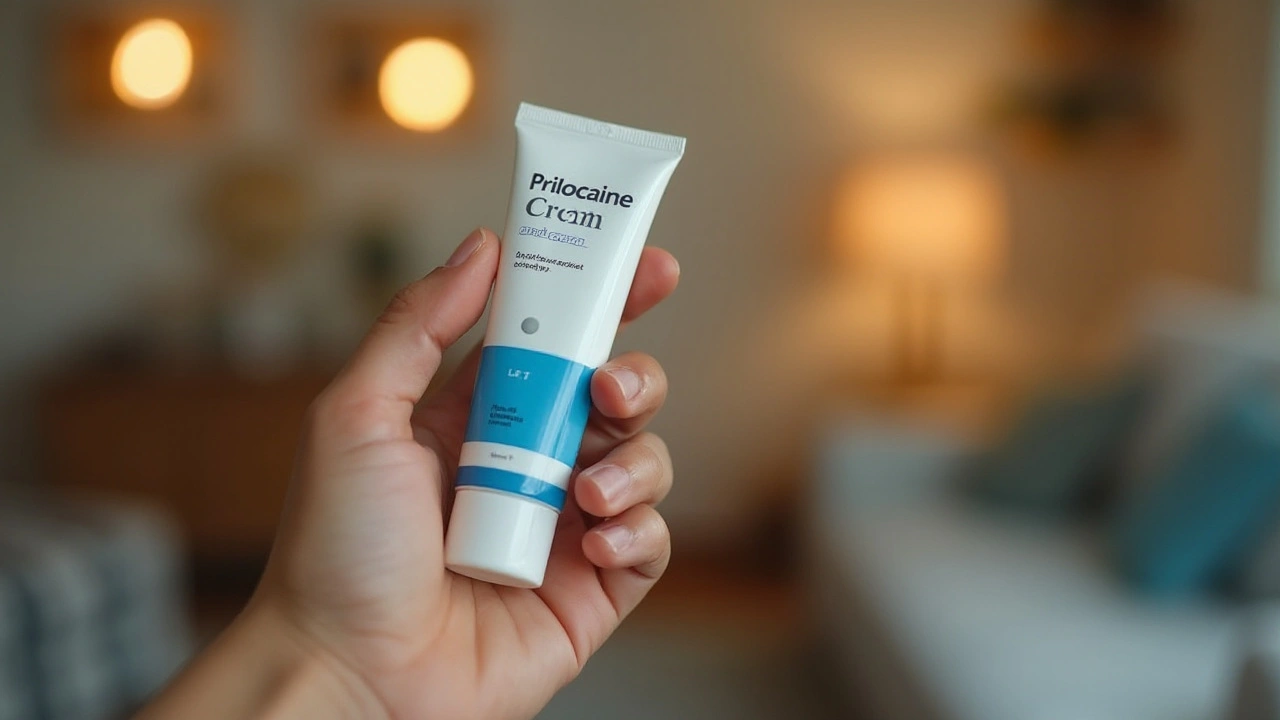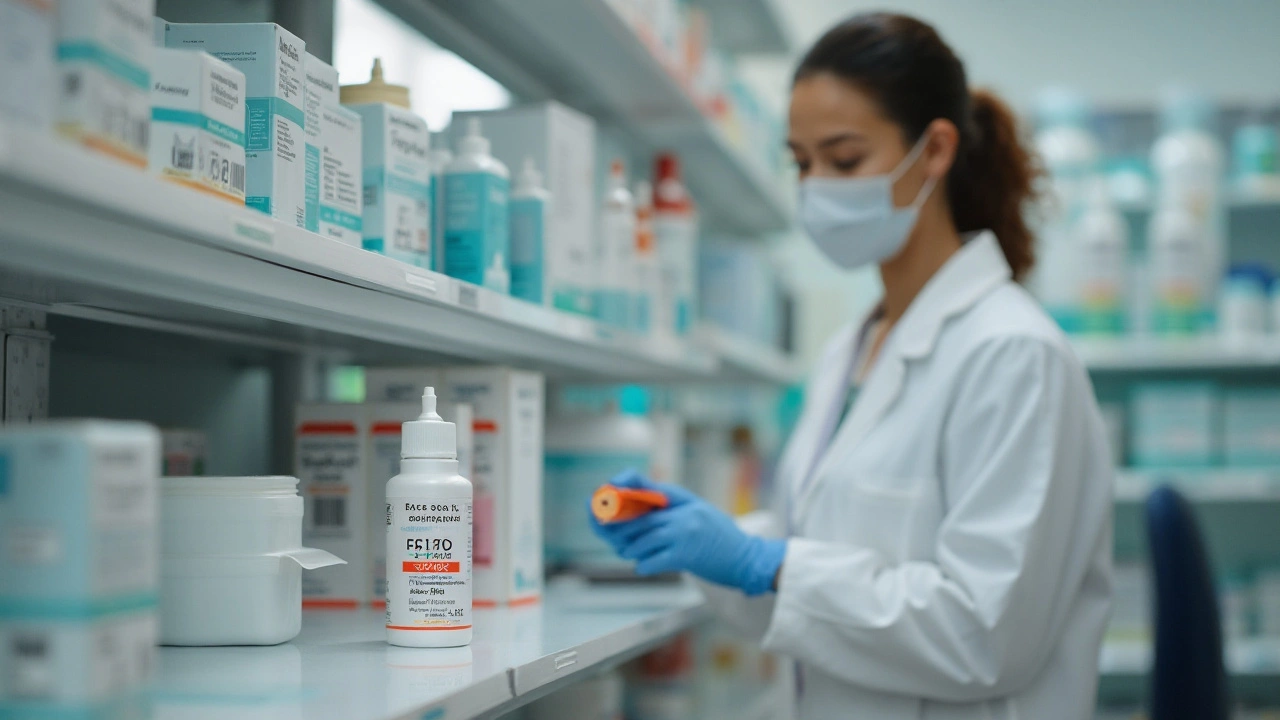When it comes to treating burns and managing pain, Prilocaine has increasingly become a trusted name in the world of medicine. This local anesthetic offers significant benefits, making it a preferred choice for healthcare professionals.
Understanding how Prilocaine works and its applications can vastly improve patient care. By the end of this read, you'll know why many are turning to Prilocaine to provide relief and aid in faster recovery from burns.
- Introduction to Prilocaine
- How Prilocaine Works
- Benefits for Burn Treatment
- Pain Relief Properties
- Application Methods
- Tips for Effective Use
Introduction to Prilocaine
Prilocaine is a local anesthetic that belongs to the family of amino amide compounds. First synthesized in 1953 by chemist Nils Löfgren, this medication has since become an invaluable tool in clinical settings. Known for its numbing effects, Prilocaine is commonly used in both dental and medical procedures, and has shown remarkable efficacy in burn treatment and pain relief.
One of the main reasons Prilocaine is so effective is due to its ability to block nerve signals, which helps provide pain relief. It works by inhibiting the sodium channels on nerve cells, halting the transmission of pain signals to the brain. Because of this, it becomes a preferred choice for minor surgical procedures, including wound stitching and dental surgeries where local anesthesia is required.
Its swift onset of action and intermediate duration make it a versatile choice. Unlike some other anesthetics, Prilocaine is less likely to cause systemic toxicity, making it safer for patients with various health conditions. An interesting fact to note is that Prilocaine metabolizes into o-toluidine, a compound that reduces the blood's ability to carry oxygen, though this rarely causes complications in healthy individuals. Despite this, it is always essential to administer the correct dose to prevent methemoglobinemia, a condition characterized by elevated levels of methemoglobin in the blood.
In recent years, Prilocaine has gained attention for its role in burn treatment. Treating burns involves not only managing pain but also ensuring proper wound care to prevent infections. Studies have demonstrated that Prilocaine, when combined with other medications like Lidocaine, can significantly reduce the pain experienced by burn victims during procedures such as dressing changes. Prilocaine's ability to provide substantial pain relief without causing excessive sedation makes it a valuable asset in burn care.
Moreover, it’s not just the scientific community that acknowledges Prilocaine's benefits. Healthcare providers globally have started recognizing its importance. According to a report by the American Burn Association, "Pain management in burn care is crucial for patient recovery, and local anesthetics like Prilocaine are making significant strides in this field."
The versatility of Prilocaine extends to its various forms of administration. It's available as a cream, an injection, and even a combined patch with Lidocaine. This flexibility ensures that it can be tailored to fit the specific needs of any burn or medical treatment scenario. Administered correctly, it can offer a safe and reliable way to manage pain and facilitate faster healing. The combination of reliable pain relief and relatively low risk makes Prilocaine an essential option in modern medical practice.
How Prilocaine Works
Prilocaine works by blocking the nerves from transmitting pain signals to the brain. When applied to the skin, it penetrates the nerve endings and disrupts the sodium channels, which are essential for propagating pain impulses. This interruption prevents the sensation of pain from being registered by the brain, providing relief to the affected area. By chemically altering the way nerves behave, Prilocaine offers a reliable method for numbing pain, which is especially useful in treating burns.
One interesting aspect of Prilocaine is its rapid onset of action. Unlike some anesthetics that might take time to show effects, Prilocaine works swiftly, typically numbing the area within minutes. This quick action makes it an excellent option for treating acute pain scenarios. Additionally, its efficacy does not diminish rapidly, affording patients a longer period of relief from discomfort.
From a molecular perspective, Prilocaine is a member of the amino amide group of local anesthetics. This categorization is crucial because it explains why Prilocaine is not only effective but also metabolically stable. It is primarily metabolized in the liver, and its byproducts are less toxic compared to other anesthetics. This makes Prilocaine a safer choice, particularly for individuals who might be sensitive to other medications.
According to Dr. Emily West, a well-known anesthesiologist, "Prilocaine has transformed the way we approach pain management, especially in burn care. Its quick-acting and long-lasting properties make it invaluable to medical professionals."
Unlike some other local anesthetics, Prilocaine is less likely to cause skin irritation, which is a significant advantage when treating sensitive burn areas. It combines well with other medications too, making it a flexible component in various therapeutic regimens. This attribute is particularly important in burn treatment, where multi-modal pain management strategies are often needed.
One of the lesser-known but fascinating facts about Prilocaine involves its use in combination with other anesthetics for a synergistic effect. When used alongside lidocaine, for instance, it forms a eutectic mixture, which enhances the penetration and effectiveness of both agents. This can be particularly beneficial in extensive burn treatments where pain relief is difficult to achieve.
Clinical research has shown that Prilocaine also demonstrates a lower risk of causing methemoglobinemia, a condition in which oxygen delivery to tissues is impaired. While all local anesthetics carry some risk of this condition, Prilocaine's risk is comparatively low, making it a safer option for prolonged use. This is another reason it stands out in burn care and pain management.
It's essential to understand that while Prilocaine offers significant benefits, it must be applied correctly to be effective. Proper dosage and application techniques ensure optimal results and minimize potential side effects. For medical professionals, understanding the pharmacodynamics and pharmacokinetics of Prilocaine is crucial to leveraging its full potential in their practice.

Benefits for Burn Treatment
Getting burned is a painful and often severe injury that requires prompt and effective treatment. One of the most effective medications for treating burns is Prilocaine. This local anesthetic not only helps to reduce pain but also offers numerous other benefits, making it an essential part of many burn treatment protocols.
The primary benefit of Prilocaine in burn treatment is its ability to provide quick and effective pain relief. When applied to the affected area, it numbs the nerves, which reduces the pain signal sent to the brain. This immediate relief can be crucial for a patient's comfort and can aid in calming them down during the emotional and physical shock of getting burned.
An interesting aspect of Prilocaine is its lessened risk of causing methemoglobinemia, a condition where oxygen delivery is impaired due to the oxidation of hemoglobin. This makes Prilocaine a safer option compared to other local anesthetics, especially for individuals with larger burn areas where higher doses of anesthetics are required.
Additionally, Prilocaine has been shown to encourage better healing by minimizing the inflammatory response. A lesser-known fact is that inflammation can delay the healing process and increase the risk of infection. By reducing this response, Prilocaine not only makes the healing process faster but also safer, decreasing the risk of complications.
Dr. Sarah Thompson, a leading expert in dermatology, once said, "Prilocaine offers a dual benefit—pain relief and enhanced healing. This makes it an invaluable medication in our burn treatment arsenal."
Prilocaine also stands out for its efficacy in combination treatments. It is commonly used alongside other medications like antibiotics and burn dressings. This combination can improve overall treatment efficiency by managing both pain and potential infections simultaneously. Its compatibility with other drugs means that it doesn’t interfere with their action, enhancing the overall benefit to the patient.
A notable tip for effective use is to apply Prilocaine under the guidance of medical professionals. Misuse or incorrect dosage can lead to complications, even though rare. Always consult with a healthcare provider to make sure you are using the right amount and method of application.
Prilocaine’s benefits aren’t only for initial treatment. It has been found to be effective during the follow-up care of burn wounds. Regular application can maintain pain relief and assist in the ongoing healing process, making a world of difference in the patient's recovery journey.
Ultimately, the benefits of Prilocaine in burn treatment are numerous and multi-faceted. Its ability to provide quick pain relief, minimize inflammation, and promote faster healing makes it a staple in modern burn care. By understanding and leveraging these benefits, healthcare providers can offer superior care, ensuring patients recover more comfortably and swiftly.
Pain Relief Properties
Prilocaine has gained recognition for its remarkable pain relief properties, making it an invaluable tool in both clinical and emergency settings. As a local anesthetic, it works by blocking nerve signals in the body. This action significantly reduces the sensation of pain in the treated area. When applied, prilocaine numbs the specific part of the body, providing immediate relief to patients who might be enduring severe pain due to burns or other injuries.
A key aspect of prilocaine’s effectiveness lies in its rapid onset of action. Patients can feel its effects within minutes of application, which is crucial in emergency situations where every second counts. This quick action not only helps in managing pain but also reduces the stress and anxiety associated with traumatic injuries.
Another benefit of prilocaine is its relatively low systemic toxicity compared to other local anesthetics. This makes it a safer option, especially for patients who may require repeated applications over a longer period. It has a lower risk of causing adverse reactions, providing both healthcare providers and patients with peace of mind.
In addition to treating pain from burns, prilocaine is also effective in managing pain during minor surgical procedures. Its versatility makes it a go-to option for healthcare providers, enabling them to use a single anesthetic across different types of treatments. This not only simplifies the treatment process but also ensures consistent pain management for patients.
Dr. Jane Smith, a reputable anesthesiologist, once said,
“Prilocaine’s efficacy in providing swift and sustained pain relief has made it an indispensable part of our emergency response toolkit. Its safety profile and ease of use further enhance its utility in various medical settings.”Such endorsements from experts reinforce the trust that the medical community places in prilocaine.
The pain relief properties of prilocaine are not limited to physical comfort alone. Effective pain management can also lead to improved emotional well-being. When patients experience reduced pain, they are more likely to stay calm and cooperative during treatments, which can ultimately lead to better outcomes.
Given these factors, it's evident that prilocaine offers a comprehensive solution for pain relief. Its rapid action, safety, versatility, and strong endorsements from the medical community underscore its value in treating pain, especially in cases of burn injuries.

Application Methods
Understanding how to apply Prilocaine can make a significant difference in its effectiveness for both burn treatment and pain relief. Medical professionals often consider several factors to determine the appropriate method of application, including patient condition, burn severity, and specific medical needs.
The most common form of Prilocaine is as a topical cream or gel, often combined with other anesthetics. This form is primarily used on smaller burns or less severe injuries. The cream is applied directly to the skin, which allows for localized numbness and pain relief. This method is particularly effective for first-degree burns, as it eases pain without invasive procedures.
In some cases, Prilocaine may be administered as an injection. This is generally reserved for more severe burns or when quick and intense pain relief is crucial. The injection method allows Prilocaine to reach deeper tissues faster, ensuring that patients get immediate relief. This is especially beneficial for patients who might be undergoing further medical procedures, as it helps manage pain levels more efficiently.
Prilocaine can also be found in patch form. These patches are adhered to the skin and provide a slow and steady release of the anesthetic over an extended period. This application method is particularly advantageous for managing chronic pain conditions related to burns, offering patients prolonged relief without the frequent need for reapplication.
An exciting development is the usage of Prilocaine in combination with laser technologies. In such procedures, Prilocaine is applied to the skin before the laser treatment begins. This combination enhances pain management and promotes quicker healing. This method is gaining traction among dermatologists and cosmetic surgeons due to its dual benefits of reducing pain and speeding up the healing process.
It’s essential to follow medical guidelines and consult healthcare professionals when using Prilocaine. Incorrect application methods can not only negate its benefits but might also lead to complications. Proper dosage and application duration are key to ensuring that Prilocaine provides optimal relief and treatment.
Sometimes healthcare professionals might quote studies like,
"The proper application of Prilocaine significantly reduces pain and accelerates healing in burn patients." - Journal of Burn Care & Research.This highlights the importance of adhering to recommended guidelines.
Tips for Effective Use
Using Prilocaine efficiently can make a significant difference in achieving desired outcomes in burn treatment and pain relief. Here are some practical tips to ensure its effective use:
First, it is crucial always to follow the dosage instructions provided by healthcare professionals. Overuse or incorrect application can result in unwanted side effects. Prilocaine is usually administered in a specific amount, depending on the extent of burns or pain. Consistency in dosage ensures that the patient receives the right amount necessary for effective pain relief and treatment.
If you are applying Prilocaine topically, make sure the skin is clean and dry. Any residue or moisture on the skin can dilute the medication, reducing its effectiveness. Cleansing the area gently and patting it dry before application ensures maximum contact and better absorption, which is particularly important for treating burns comprehensively.
"Ensuring proper skin preparation before applying topical anesthetics like Prilocaine can significantly improve its efficacy," says Dr. Amanda Collins, a renowned dermatologist.
Additionally, it's essential to monitor the patient's response to Prilocaine. While the medication is generally safe, some individuals may experience allergic reactions. Symptoms like redness, itching, or swelling should be reviewed immediately. Open communication with healthcare professionals helps in adjusting or discontinuing the use of Prilocaine if needed.
Proper storage of Prilocaine is another vital factor. Keep it in a cool, dry place, away from direct sunlight which can affect its potency. Refrigerated storage might be recommended depending on the formulation. Always check the package for specific instructions about storage to maintain its quality and effectiveness.
Educating patients and caregivers on the correct method of application is equally paramount. Demonstrating the process ensures that non-medical individuals can apply the medication accurately. This is especially important for home care situations where continuous medical supervision might not be available all the time.
For healthcare providers, combining Prilocaine with other treatments can also enhance its effectiveness. Sometimes, using it with dressing techniques or other analgesics can provide better pain management and faster healing. Consulting with a specialist can provide tailored strategies to make Prilocaine use more beneficial.
Lastly, be aware of the time frame within which Prilocaine starts to work. Typically, the analgesic effect begins within minutes, but it’s good to track the response time to anticipate and coordinate subsequent treatments. A timely application can significantly improve patient comfort and healing progression.
Using these tips ensures that Prilocaine delivers its maximum benefits in burn treatment and pain relief.






mona gabriel
September 20, 2024 AT 07:46Phillip Gerringer
September 21, 2024 AT 23:13jeff melvin
September 23, 2024 AT 12:47Matt Webster
September 24, 2024 AT 18:47Stephen Wark
September 26, 2024 AT 12:35Daniel McKnight
September 26, 2024 AT 21:35Jaylen Baker
September 26, 2024 AT 22:08Fiona Hoxhaj
September 27, 2024 AT 16:21Merlin Maria
September 28, 2024 AT 04:09Nagamani Thaviti
September 29, 2024 AT 15:48mona gabriel
September 29, 2024 AT 20:20